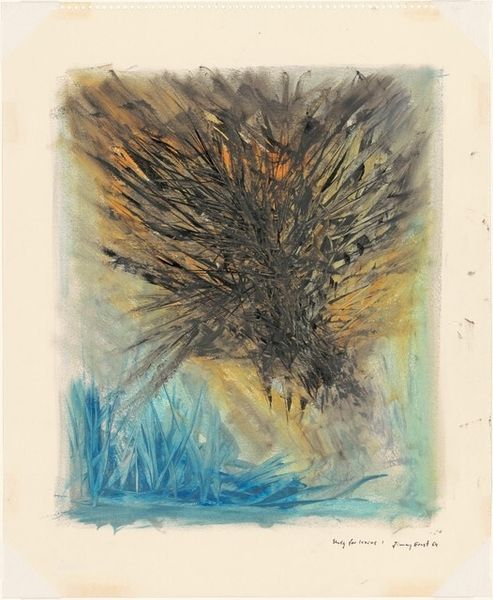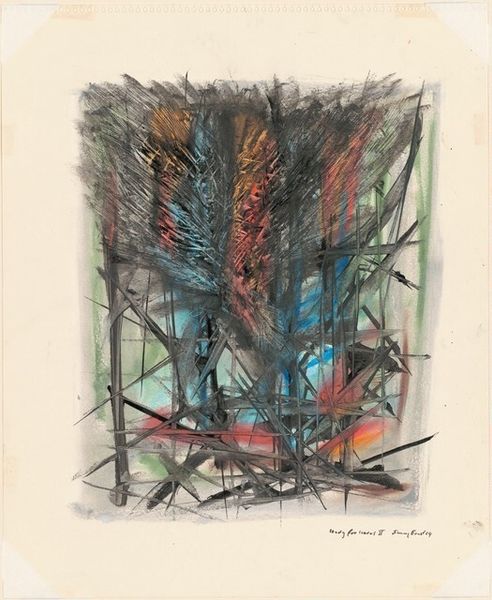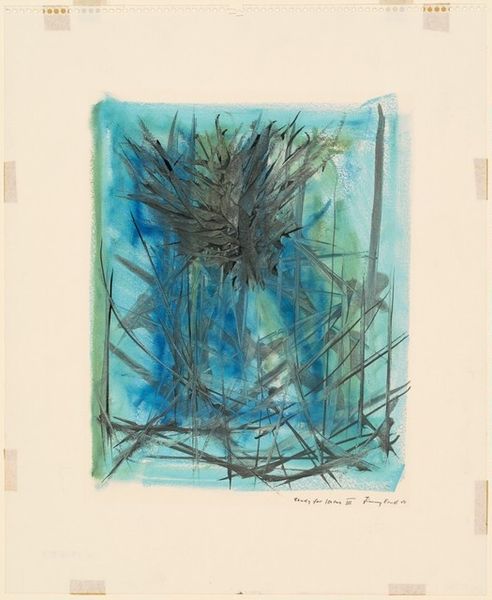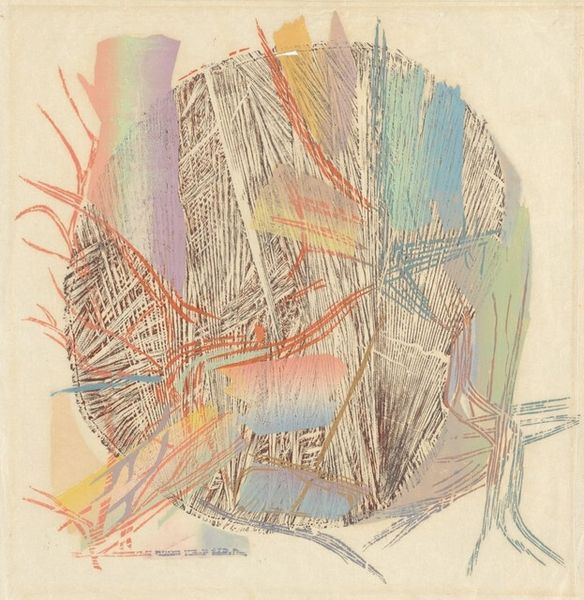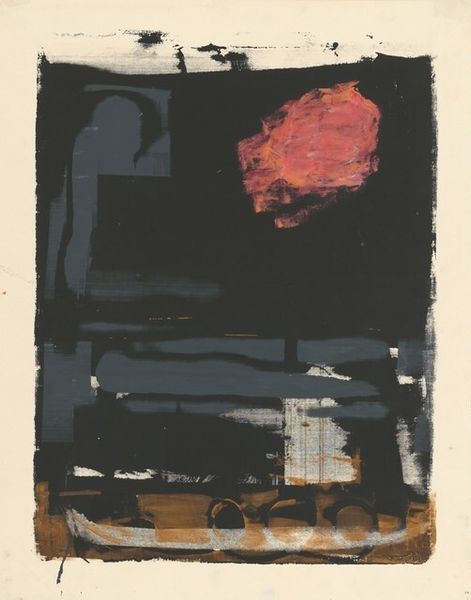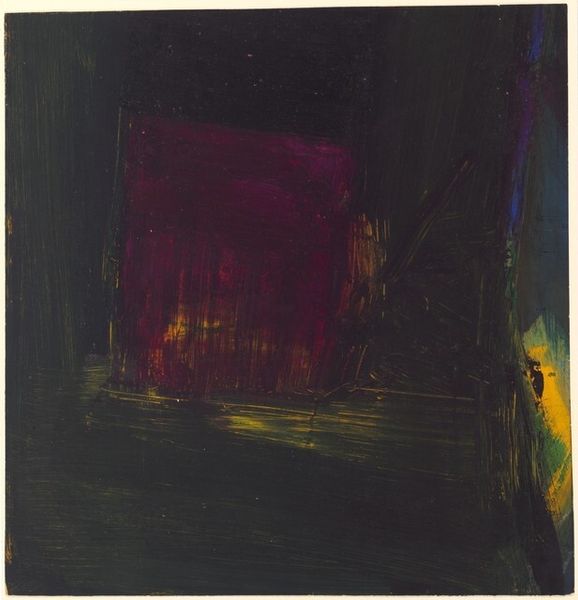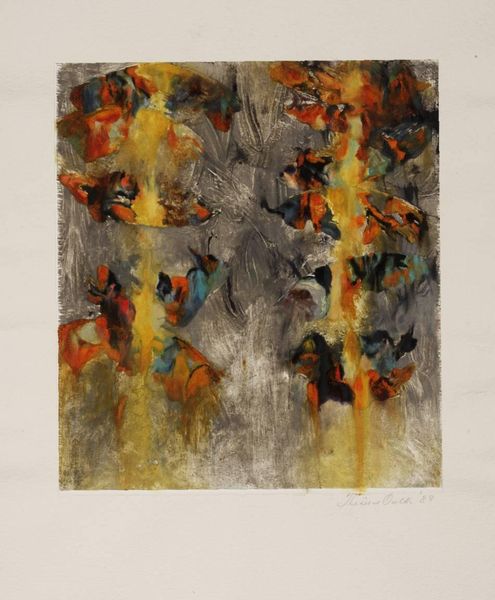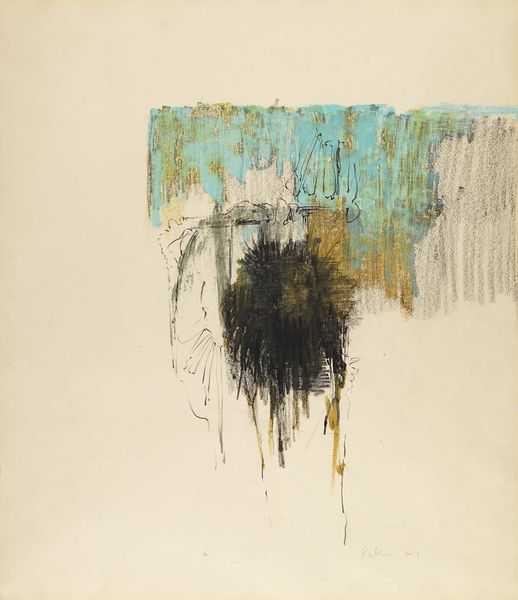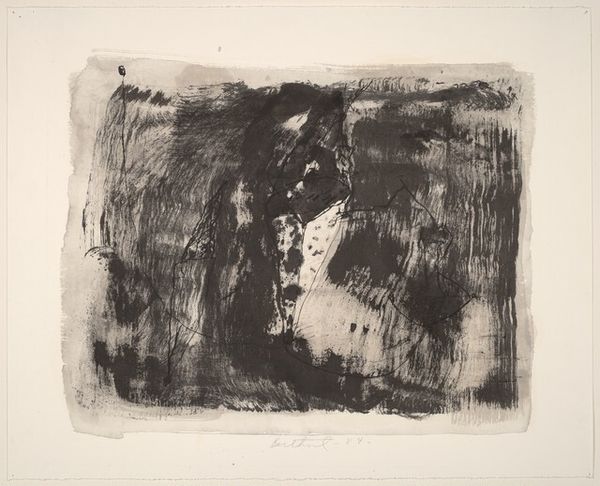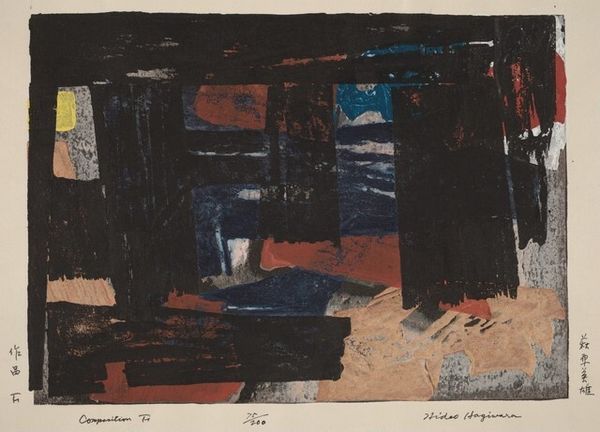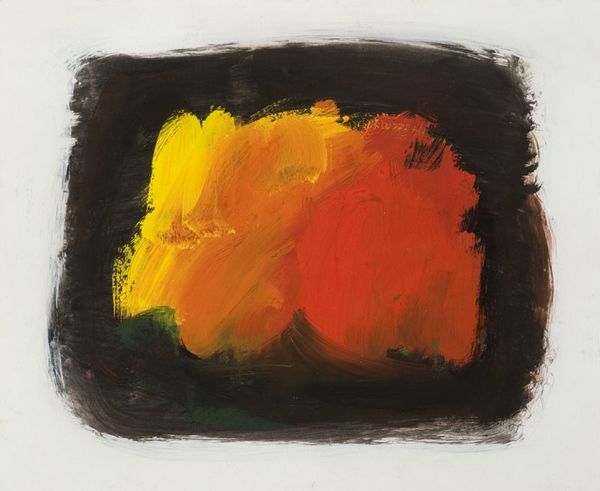
drawing, watercolor
#
abstract-expressionism
#
drawing
#
form
#
watercolor
#
abstraction
#
line
Dimensions: image: 33.02 × 25.4 cm (13 × 10 in.) sheet: 43.34 × 35.56 cm (17 1/16 × 14 in.)
Copyright: National Gallery of Art: CC0 1.0
Curator: "Study for 'Icarus', No. 4" created in 1964 by Jimmy Ernst. It combines watercolor and drawing techniques to evoke a sense of abstract expressionism. Editor: It strikes me as a visual metaphor for impending doom. The vibrant colors at the top contrasted with the chaotic dark lines suggest a beautiful, yet tragic downfall. Curator: Indeed. Ernst was deeply affected by the sociopolitical climate of the mid-20th century. Consider the era's Cold War anxieties, existentialism, and the pervasive fear of nuclear annihilation. "Icarus" becomes a powerful allegory, not just for individual hubris but for humanity's self-destructive tendencies on a grand scale. The red almost evokes a sky aflame, doesn’t it? Editor: Absolutely. And how Ernst uses line is really interesting; a sense of anxiety in the crosshatching, while below it, these thin vertical lines, which, depending on my mood I interpret either as falling rain, or as spears pointed up ready to meet the plummeting figure. It certainly evokes the feeling of irrevocable consequences. Were works like this shown in galleries or perhaps outside? How was he seen? Curator: Ernst belonged to a generation of artists who were grappling with unprecedented questions about humanity’s place in the world, in spaces like the Guggenheim. His art actively interrogated our relationship to power and our capacity for both creation and destruction. By grounding Icarus's mythos in contemporary themes of the '60s, he encourages viewers to consider how timeless narratives are applicable to shifting social dynamics. This period encouraged a democratization of exhibition and of audience reception. Editor: This really resonates when we explore the use of the Icarus myth across different art historical movements. Here, this focus is the sociopolitical reality. What a burden of the human condition to consider and attempt to give shape to. Curator: It really asks a viewer to explore the complex layers in abstract-expressionism. Ernst doesn’t shy away from provoking questions on cultural shifts and universal themes. Editor: An exploration in our history and anxieties that really pushes the viewer toward a needed critical evaluation.
Comments
No comments
Be the first to comment and join the conversation on the ultimate creative platform.
